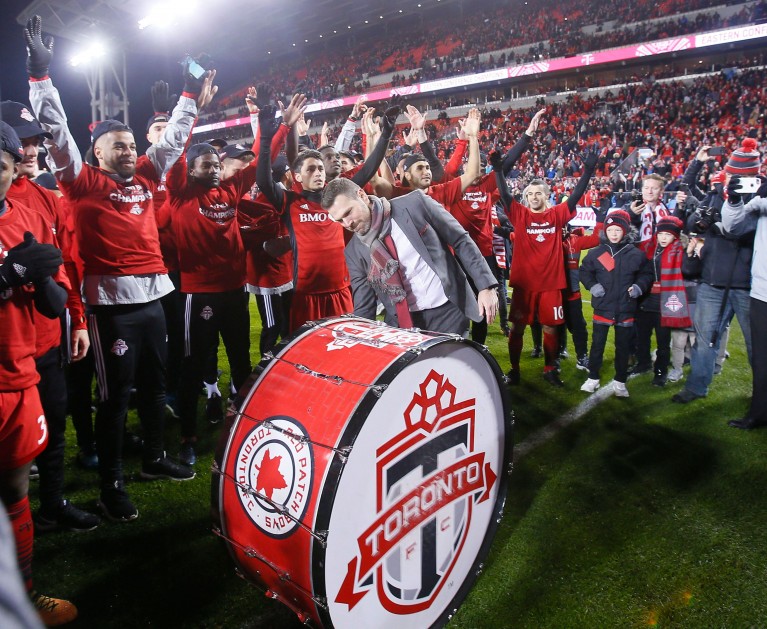Exactly one month ago, on Saturday, December 9th, in front of a packed crowd at BMO Field, Toronto FC defeated the Seattle Sounders 2-0 to win the 2017 MLS Cup. Their win was decisive; they dominated the possession, defended well, controlled the rhythm of the game, created more scoring opportunities and capitalised on enough of them to ensure victory.
In the 30 days that have passed since this historic win, the city of Toronto has been abuzz with support for their Football Club. It has been evident and visible in person across the city, as well as all over social media.
A question which must be asked amid all this success, however, is when – or even if – it will ever translate into improvement in the performance of the Canadian National Men’s Soccer Team.
With popularity of soccer in Toronto and Canada at an all-time high, our Men’s National Team still toils in obscurity; at the time of the writing of this article, we are ranked 94th in the world, behind countries like Gabon, Belarus and Armenia.
The United States has seen a similar surge in the popularity of soccer in the 23 years since their hosting of the FIFA World Cup in 1994 and subsequent inception of Major League soccer the following year, and yet, they too have had a recent drop in the performance of their Men’s National Team, having failed to qualify for the World Cup for the first time since 1986.
Just what is it about Canadian and American soccer that has led to these poor results internationally? And what – if anything – can be done to capitalize on the popularity of Major League Soccer for the Canadian and United States Men’s National Teams to perform better in the future?
In this 3-Part article, I will provide my 3 suggestions, which began with Part 1 (instituting a limit on the number of foreign players playing in MLS, and non-Canadian players playing for TFC) last week, and Part 2 (developing a tiered-division system with promotion and relegation). This week, we’ll have a look at Part 3.
Part 3: Major League Soccer academies, as well as other North American soccer clubs and academies, must be compensated for the sale of youth players to other North American and/or international clubs
In other words, incentivise clubs to develop players.
At present, American and Canadian youth clubs and academies – including MLS academies – are not financially rewarded for producing players who become professionals (either locally or abroad) nor, in many cases, are they even recognized or acknowledged for the role they have played in the development of talented players who have progressed to these higher levels.
In most countries with successful national teams programs – especially in Europe where most professional clubs have youth academies – player development is treated as a business. Professional youth academies, most notably those without investors or large budgets, are able to sustain their expenses partially through revenue earned when a player they developed – their “product” – is “purchased” by another club – the “consumer” – and signs a professional contract.
Unfortunately, in North America, our own youth clubs and academies are disconnected from this “business” model, and thus there are no tangible, financial incentives for them to develop players. This lack of incentive in turn means that the player development system in our country is fragmented, and we are not able to help our young players reach their maximum potential.
Furthermore, until very recently, the great majority of the youth soccer leagues and tournaments in North America have only rewarded clubs for winning, irrespective of the quality of their play and/or the quality of the players they produce. Thus, the primary aim of all American and Canadian youth soccer clubs has been, for decades, to win league titles and trophies at tournaments, not to develop players.
Ultimately, if clubs are not financially incentivised to develop top level professional soccer players, then top level professional soccer players will not be developed.
If Major League Soccer’s youth academy management, coaching, support staff, and players themselves become driven not just by a love of the game but also by the potential to earn more money through the development and sale of their players, it can only lead to improvements in the quality of players being produced in North America and, in turn, in the quality of the performances of the United States and Canadian Men’s National Teams.
I’d love to hear your thoughts about this topic. Drop me a line here to get the conversation started.




